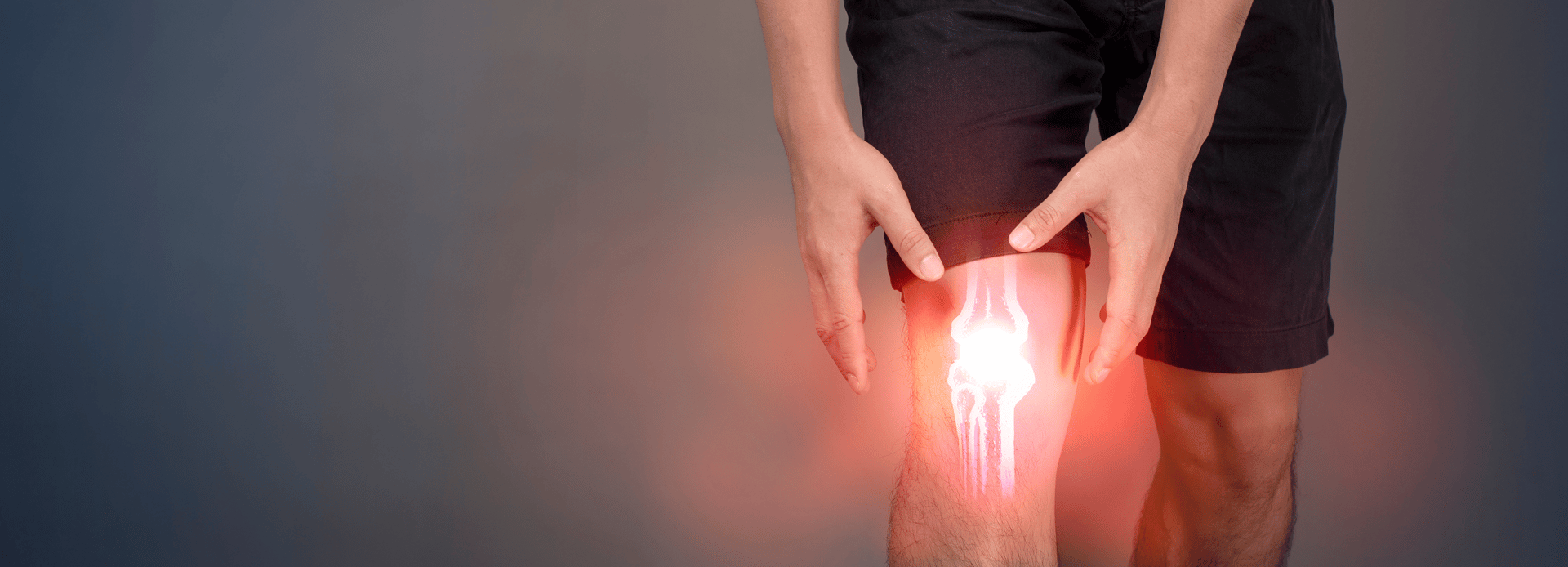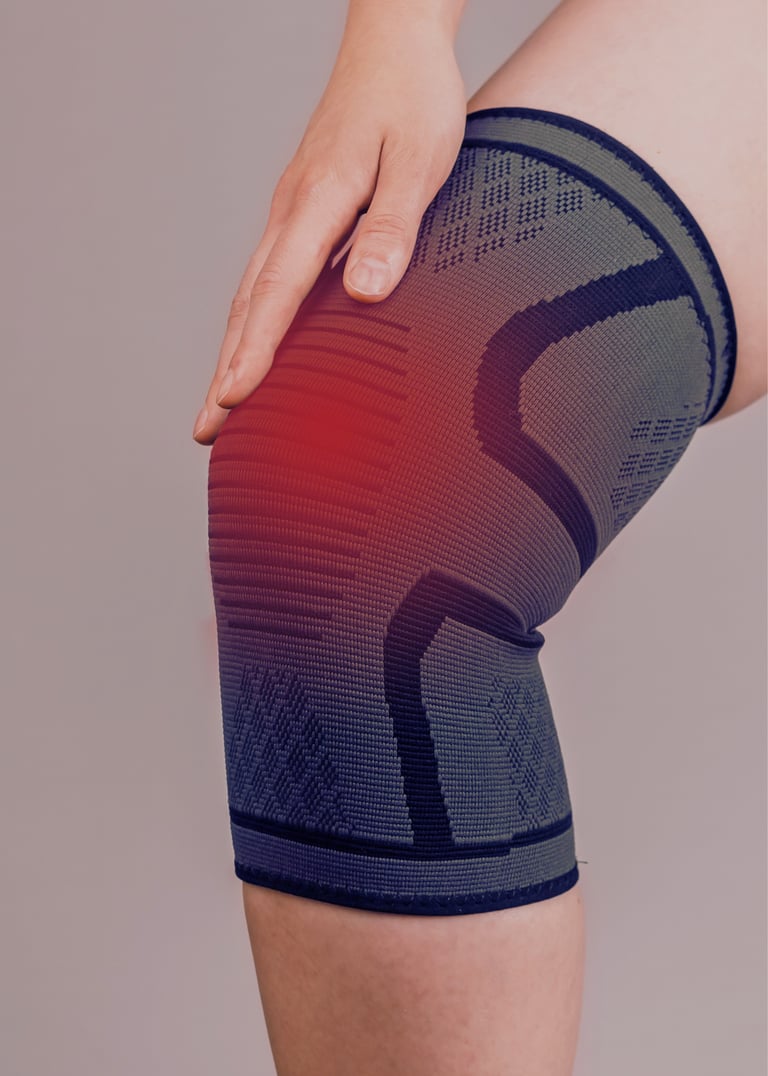
Knee Pain
Learn more about the cartilage damage
If you are experiencing knee pain, it is important to speak with your healthcare provider to determine the underlying cause
What is the functioning mechanism of your knee?
The knee joint is a complex hinge joint that connects the thigh bone (femur) to the shin bone (tibia). It also has a smaller bone on the outside called the fibula that helps with stability.
The knee also has two crescent-shaped pieces of cartilage called menisci, which act as shock absorbers and help distribute weight evenly across the joint.
In addition, the knee joint is held together by a series of ligaments and muscles that connect the bones and provide stability.
Finally, the joint is lined with cartilage, which cushions the bones and helps them move smoothly against each other.
If any of these structures in the knee joint are injured or damaged, this results in pain, swelling, and difficulty moving the joint.


Preserving your cartilage is crucial to protect your knees


Cartilage is solid yet flexible enough to allow adults' bones to move against each other without injury for decades. But while protecting the bones, the cartilage can sustain damage. It can cause pain, stiffness, swelling, locking, and difficulty moving the joint.
It is essential to seek medical attention if you experience any symptoms of cartilage damage
What happens when the cartilage is damaged?
When cartilage is injured, the defect in the articular cartilage cannot repair itself. Cartilage contains a dense tissue matrix with very few cells, no blood vessels, or innervation. Some healing can happen when the injury is large enough to expose the underlying bone and cause intraarticular bleeding. However, the repair tissue is not durable, pain recurs when the recovery is inadequate, and cartilage deteriorates even more. If the knee is left untreated, it might progress to irreversible knee damage.
Can it repair itself?
An orthopedic surgeon will develop an appropriate diagnostic and treatment plan. This will include physical assessment, X-rays, MRI, and subsequent physical therapy, medication, or in some cases, surgery. If the knee is left untreated, it might progress to irreversible knee damage


Rest your knee: take a few days off from intense activity
In the meantime, you can take steps to alleviate your symptoms:
Treatment
Ice it to curb pain and swelling: do it for 15 to 20 minutes every 3 to 4 hours, until the pain is gone
Compress your knee: use an elastic bandage, straps, or sleeves to wrap the joint
Elevate your knee with a pillow under your heel when you're sitting or lying down to cut down on swelling
Take nonsteroidal anti-inflammatory drugs. Follow the instructions on the label, unless your doctor says otherwise
Practice stretching and strengthening exercises if your doctor recommends them
